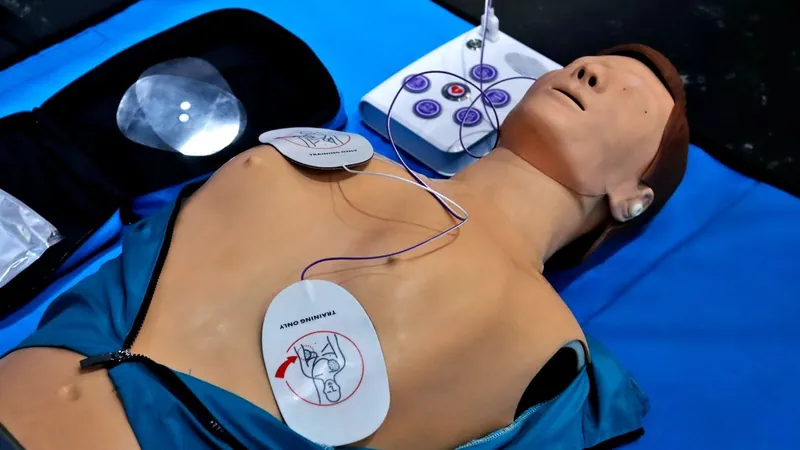
Groundbreaking Study Reveals New Technique for Defibrillation Could Save Lives!
2024-09-26
Introduction
A recent study has challenged long-standing beliefs about the optimal placement of defibrillator pads, indicating that the traditional method may not be the most effective in reviving patients after cardiac arrest. Instead of placing pads just on the front of the chest, researchers suggest positioning one pad on the front and one on the back may greatly enhance the chances of restoring a patient's heartbeat.
Study Findings
This insightful research analyzed the outcomes of defibrillation in over 250 patients who suffered out-of-hospital cardiac arrests, uncovering that the innovative front-and-back technique more than doubles the success rate compared to the conventional front-only approach. With cardiac arrests affecting approximately 350,000 individuals annually in the U.S. alone, and a survival rate of less than 10%, these findings could represent a major breakthrough in emergency medical response.
Expert Opinions
Dr. Mohamud Daya, a professor of emergency medicine at Oregon Health and Science University and one of the study's co-authors, emphasized the importance of energy flow during defibrillation. “You want energy to travel from one pad to the other through the heart,” he explained. The research categorized patients based on whether they received front-and-back or front-side pad placements, with those using the former experiencing a staggering 2.64 times higher likelihood of returning to spontaneous circulation (ROSC).
Need for Further Research
While more extensive clinical trials are needed to confirm these findings, the outcomes of this study, published on September 9 in JAMA Network Open, open the door to re-evaluating current emergency protocols. The research also highlights the common misconceptions regarding defibrillator pad effectiveness, as medical professionals have generally assumed both placements yield similar results.
Real-Life Implications
In real-life scenarios, speed is crucial. Ventricular fibrillation and pulseless ventricular tachycardia—two of the most common, treatable causes of cardiac arrest—can rapidly lead to death if not addressed correctly and quickly. The time it takes to deliver a shock can mean the difference between life and death.
Limitations of the Study
However, the study is not without limitations. The observational nature of the research means it cannot definitively prove that pad placement independently affects resuscitation outcomes. Other factors such as patient demographics, health conditions, and the specifics of the emergency situations might play a role in the differing results, necessitating further investigation.
Challenges to Implementation
Moreover, certain practical challenges may hinder the adoption of the front-and-back pad placement method in real-life emergencies. Situations involving larger patients or limited space could complicate the process, making it difficult for laypersons or even trained responders to execute this technique effectively.
Conclusion
As the push for best practices in emergency medicine continues, the study’s findings suggest a possible evolution in the way cardiac arrests are handled in the field. While there are barriers to implementation, the life-saving potential of front-and-back pad placement is certainly worth exploring further. Could this be the key to a higher survival rate and more lives saved in cardiac emergencies? Stay tuned as more research unfolds!




 Brasil (PT)
Brasil (PT)
 Canada (EN)
Canada (EN)
 Chile (ES)
Chile (ES)
 España (ES)
España (ES)
 France (FR)
France (FR)
 Hong Kong (EN)
Hong Kong (EN)
 Italia (IT)
Italia (IT)
 日本 (JA)
日本 (JA)
 Magyarország (HU)
Magyarország (HU)
 Norge (NO)
Norge (NO)
 Polska (PL)
Polska (PL)
 Schweiz (DE)
Schweiz (DE)
 Singapore (EN)
Singapore (EN)
 Sverige (SV)
Sverige (SV)
 Suomi (FI)
Suomi (FI)
 Türkiye (TR)
Türkiye (TR)